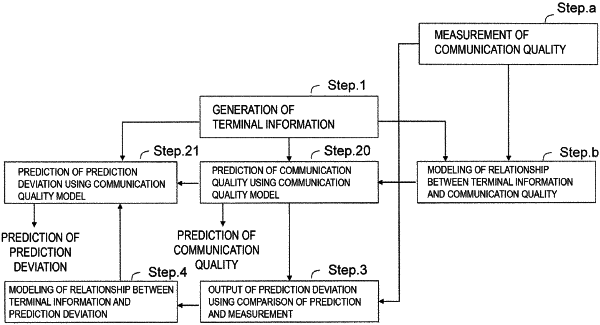| CPC H04B 17/3913 (2015.01) [H04B 1/3827 (2013.01); H04B 17/26 (2015.01)] | 5 Claims |

|
1. A mobile terminal for performing wireless communication, comprising:
a processor; and
a storage medium having computer program instructions stored thereon, when executed by the processor, perform to:
measure communication quality of the wireless communication;
generate terminal information consisting of at least one or more of a position, a posture, a motion, control information, camera and sensor information, and past communication information of the mobile terminal;
generate a communication quality model from the terminal information and the measured communication quality of the wireless communication using machine learning, thereby learning a relationship between communication quality of the wireless communication and the terminal information to predict communication quality from current terminal information;
estimate communication quality using the communication quality model;
determine an error between the measured communication quality and the estimated communication quality from the communication quality model;
generate a prediction deviation model from the terminal information and the error between the measured communication quality and the estimated communication quality using machine learning, thereby learning a relationship between the error and the terminal information to predict the error between the measured communication quality and the estimated communication quality from current terminal information; and
estimate the error between the measured communication quality and the estimated communication quality us the prediction deviation model.
|